To Catch a Coon

Delta Waterfowl studies raccoon movements to make trapping more efficient
By Paul Wait
Delta Waterfowl’s Predator Management trappers caught dozens of raccoons on the prairie breeding grounds last spring. There’s nothing new about that: Delta has been trapping duck-nest predators since 1994.
Except last year, 13 of the raccoons caught by Delta’s trappers in southwest Manitoba got a second chance to roam free — in the name of science. These “lucky” raccoons were fitted with GPS collars that send signals to satellites at scheduled intervals. The goal of the project, which is a collaborative research effort between Delta Waterfowl, the Max McGraw Wildlife Foundation and Ohio State University, is to document home ranges, movement patterns and habitat use during the waterfowl nesting season.

Delta harnessed 13 raccoons with GPS transmitting collars this spring to study the animals’ movements on the prairie breeding grounds.
“We decided to do this study because we found that raccoons are the No. 1 predator destroying nests of over-water nesting ducks such as canvasbacks,” said Joel Brice, vice president of waterfowl and hunter recruitment programs for Delta Waterfowl. “We said, ‘Let’s learn more about them.’ What percentage of time are they spending in wetlands? Where are they traveling?”

The yellow dots show the recorded locations of a single raccoon from early May to mid-July. As you can see, this raccoon is traveling wetland edges frequently.
Raccoons are relatively new predators in the prairie pothole region, first arriving in prime duck nesting habitat in the 1950s. They quickly became overabundant and a major nemesis of ducks and many other prairie-nesting birds.
The past few nesting seasons, Delta has deployed hundreds of trail cameras to monitor the over-water nests of canvasbacks, redheads and ring-necked ducks as part of another major research project on Predator Management being conducted by Mike Johnson, a University of Minnesota master’s degree student.
A prevalence of raccoons caught on camera — even in deeper water — led to the idea to study their movements.
Working with Dr. Stanley Gehrt and Dr. Charlotte Milling of the Ohio State University, and Shane McKenzie of the Max McGraw Wildlife Foundation, Delta technicians fitted the raccoons with collars in late April and early May. On the advice of Gehrt, the transmitters were set to send tracking data twice during the day and every 10 minutes at night.
“The data are still being analyzed, but early indications show that raccoons are spending a ton of time in and around wetlands,” Brice said. “It makes sense, because raccoons are semi-aquatic predators. But it looks like they are spending even more time near wetlands than we expected.”
The end game of this research is to understand how to make Delta’s Predator Management trapping more efficient and effective. In other words, we’re trying to help our trappers catch and remove more raccoons that destroy duck nests.
“By understanding what the raccoons are doing, we should be able to better catch them,” Brice said.
Testing Traps and Baits
In a related effort to improve our ability to catch raccoons, Delta also initiated a trap and bait testing study in the Canadian parklands.
“The goal was to find out if a specific type of trap worked best, and if a specific bait type was better than others,” Brice explained.

On June 12 at 2:26 a.m., a Delta trail camera positioned on a canvasback nest caught one of the collared raccoons in the act of depredating it.
Three types of traps were tested: Cage traps (a.k.a. live traps), dog-proof traps (coon cuffs) and bodygrip traps (Conibears). Four types of commercially available baits were used: sweet bait, meat/fish-based, gland-based and a curiosity bait.
The trapper set 294 unique sites across the landscape. Some of the sites had all three types of traps baited with the same bait, while other sites had four traps of identical design each set with a different bait.
During the trap/bait study, which ran from March 15 to July 15, Delta’s trapper caught 304 raccoons.
The preliminary findings?
“We think we have identified a specific trap type that was responsible for much of the catch,” Brice revealed. “One bait also seems to have outperformed the others.”
Cage traps proved particularly effective, while the curiosity bait — an oily, aromatic pellet — proved to be the elixir for many parkland raccoons.
Certainly, all of the trap types and baits caught raccoons, but for Predator Management, the goal is to remove as many raccoons and other predators as soon as possible, before they can spend nights marauding in search of nesting ducks.
“The study will give us better information about which trap types and baits to use at our trapping sites,” Brice said.

Delta is studying which trap types and baits work best to catch raccoons. At this site, the same type of trap is set using four different baits.
More in-depth analysis will be completed this fall to look at shifts in preferences throughout the trapping season, influences of weather patterns, sex ratios and catch pulses.
“By understanding movements of raccoons, as well as learning how to catch them more efficiently, we’re improving the effectiveness of Predator Management,” Brice said. “And that means more duck nests will hatch.”
Paul Wait is editor and publisher of Delta Waterfowl.

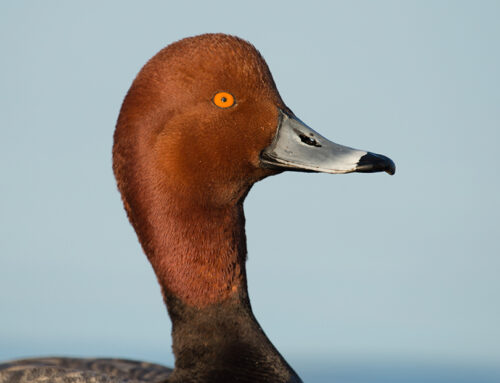
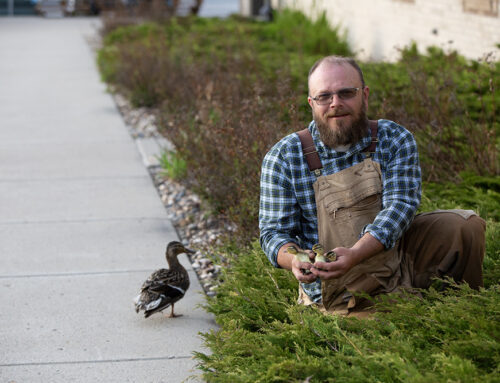
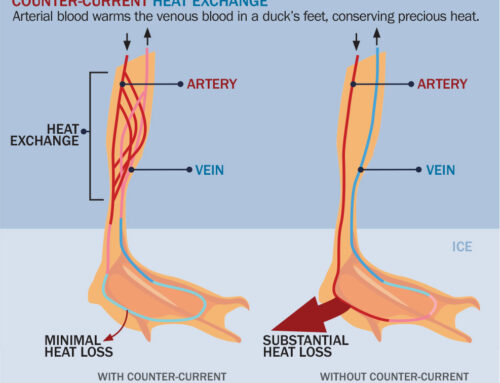
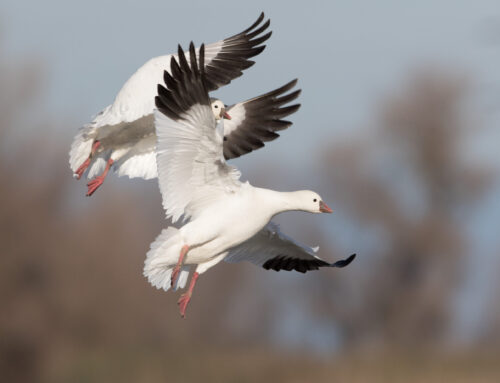
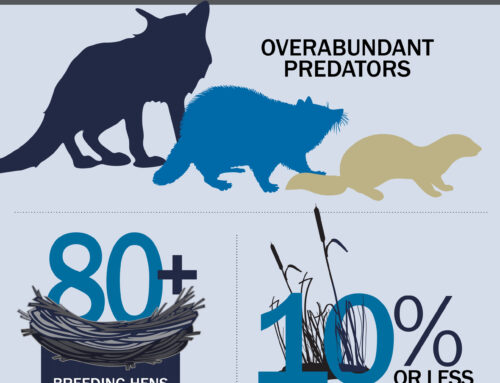
Good job! The more predator control in nesting areas, the better a ducks chance! Keep at it!
What was the best traps and bait used for the raccoons? I have some wood ducks and some quail and like to get rid of them.
We found that live cage traps were the most effective trap and the best bait was a mix of O’Gormann’s “coon caviar” and “masked seduction.”